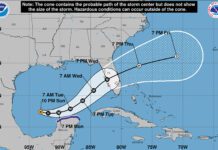The ultimate fallout from last months crash of a Cirrus SR20 into a New York high-rise building, killing the Cirrus owner and pilot, New York Yankees pitcher Cory Lidle, and his instructor, may come well before the NTSBs probable cause determination. As this issue of

Chief among the questions being asked by the uniformly uninformed general media are, “What if Lidle had been a terrorist?” and, “Why are little airplanes allowed to fly over a major city?” Unfortunately for general aviation, the correct answers dont lend themselves to sound bites. Equally unfortunate, aviation safety and aviation security were once again combined into one “issue.” Never mind that Lidles SR20 did little actual damage to the high-rise, much less than could have been the case with a Ryder truck.
Lidle and his instructor apparently were using well-defined and -charted corridors under the New York Class B airspace for some sightseeing. There are hundreds of helicopter and fixed-wing operations in those corridors each day, allowing flights to get where theyre going and minimizing the impact on the areas overworked ATC system. In fact, since it appears Lidles SR20 was attempting to turn around before entering Class Bravo airspace near LaGuardia, it could be argued that fewer airspace restrictions, not more, would enhance safety.
Regardless, the fact is that a general aviation aircraft carrying a celebrity once again crashed in a spectacular fashion, bringing with it extremely unfavorable media coverage. As one result, the FAA likely will be forced to eliminate the VFR corridors underlying the New York Class B. Similar steps also could be taken over other U.S. cities. And it wont matter if any resulting airspace changes are made in the name of safety, security or both: the end result will be the same.
We can complain all we want about the medias lack of general aviation knowledge and expertise. Despite the very real and measurable improvements in general aviations safety record in recent years, events like this eradicate any public perception gains we may have made and reinforce the belief that our aircraft are dangerous and their pilots incompetent. Those are the cards weve been dealt.
Each time one of us does something with an airplane to gain unfavorable attention, the likelihood of reactionary restrictions increases. I dont for a moment believe Lidle and his instructor planned for their flight to end as it did, but too few of us give any thought at all to the impact our antics may have.
The history of U.S. civil aviation says that accidents lead to more restrictions. If you dont want to see such rules imposed, dont have an accident. While you may think its not that simple, it really is.
he ultimate fallout from last months crash of a Cirrus SR20 into a New York high-rise building, killing the Cirrus owner and pilot, New York Yankees pitcher Cory Lidle, and his instructor, may come well before the NTSBs probable cause determination. As this issue of Aviation Safety was being put to bed, the drumbeat for government to “do something” about general aviation was being heard on cable news and in editorial pages across the U.S.
Chief among the questions being asked by the uniformly uninformed general media are, “What if Lidle had been a terrorist?” and, “Why are little airplanes allowed to fly over a major city?” Unfortunately for general aviation, the correct answers dont lend themselves to sound bites. Equally unfortunate, aviation safety and aviation security were once again combined into one “issue.” Never mind that Lidles SR20 did little actual damage to the high-rise, much less than could have been the case with a Ryder truck.
Lidle and his instructor apparently were using well-defined and -charted corridors under the New York Class B airspace for some sightseeing. There are hundreds of helicopter and fixed-wing operations in those corridors each day, allowing flights to get where theyre going and minimizing the impact on the areas overworked ATC system. In fact, since it appears Lidles SR20 was attempting to turn around before entering Class Bravo airspace near LaGuardia, it could be argued that fewer airspace restrictions, not more, would enhance safety.
Regardless, the fact is that a general aviation aircraft carrying a celebrity once again crashed in a spectacular fashion, bringing with it extremely unfavorable media coverage. As one result, the FAA likely will be forced to eliminate the VFR corridors underlying the New York Class B. Similar steps also could be taken over other U.S. cities. And it wont matter if any resulting airspace changes are made in the name of safety, security or both: the end result will be the same.
We can complain all we want about the medias lack of general aviation knowledge and expertise. Despite the very real and measurable improvements in general aviations safety record in recent years, events like this eradicate any public perception gains we may have made and reinforce the belief that our aircraft are dangerous and their pilots incompetent. Those are the cards weve been dealt.
Each time one of us does something with an airplane to gain unfavorable attention, the likelihood of reactionary restrictions increases. I dont for a moment believe Lidle and his instructor planned for their flight to end as it did, but too few of us give any thought at all to the impact our antics may have.
The history of U.S. civil aviation says that accidents lead to more restrictions. If you dont want to see such rules imposed, dont have an accident. While you may think its not that simple, it really is.



